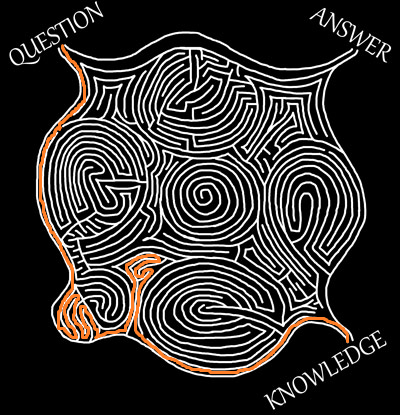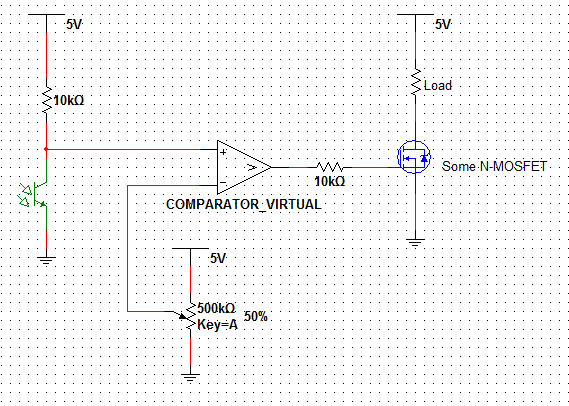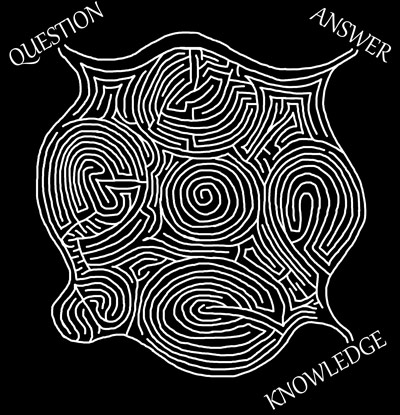
Fixed. There's a way around it.
You're not a trollin' newbie, I know that.
Start with something like this basic circuit:

It uses a voltage divider, whose output is dependent on incident light - right?
Cool, now take an op - amp or a comparator and take that varying voltage, and
compare against some reference voltage you adjusted by turning the pot.
When it gets too dark, the photoresistor/transistor (whatever you choose) will become more resistive, and a higher voltage will appear across it. As soon as that voltage goes higher than the
compared reference voltage you set on the (-) input, the comparator will swing its output to the +Vcc state (+5V) in this case. That swing to a positive voltage puts the MOSFET into saturation mode and it becomes a very small resistance. This turns on your 'load' - whatever that it is.
The MOSFET must be able to handle the load current, the comparator must be able to run at your Vcc - whatever that is - and so on. Give this circuit a try, and experiment with it until it works how you'd like it to.
Both comparators and MOSFETs are 'voltage' controlled devices and will require very little current to operate. I think you'll find that something like this circuit draws very little power. Good luck with your build!









